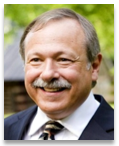
James Madison wisely observed, “When the variety and number of political parties increases, the chance for oppression, factionalism, and non-skeptical acceptance of ideas decreases.”
Marginalized policy initiatives can often bubble up into the mainstream because of independent candidates and third parties. In his book Declaring Independence: The Beginning of the End of the Two-Party System, political strategist Douglas Schoen noted, “While third party movements and candidates have periodically emerged to challenge the status quo … none have ever come close to winning, though they did end up having a significant impact on policy formation as a result of their campaigns.”
Although the success of the Prohibition Party was fleeting, it is a good model of how an issue can come from a single constituency, evolve into a formidable political force, and flex muscle on Capitol Hill.
The Prohibition Party has run candidates for President in every election since 1872, but none received more than 300,000 votes or about two percent of the ballots cast. However, its candidates for state and federal office often siphoned off votes that cost the major party nominees their winning margins. That proved to be powerful political leverage. In the 1918 contest for US Senate in Colorado, incumbent Democrat John Shafroth polled 48 percent of the vote, but Prohibition Party candidate P. A. Richardson, who nabbed just 2.58 percent, gave the Republican nominee the edge – one of the two seats the GOP needed for majority status on Capitol Hill.
The Prohibition Party applied anti-establishment political pressure while bi-partisan grass roots organizations such as the Anti-Saloon League worked within the apparatus of the two major parties. The chemical reaction resulted in a Constitutional Amendment establishing prohibition as public policy.
The Libertarian Party has been a deciding factor in many elections in the past 45 years. In 1998, Majority Leader Harry Reid was re-elected by only 428 votes while the Libertarian candidate pulled in 8,000 supporters. In 2002, the country’s most hard-fought Senate race was in South Dakota. Republican John Thune lost to the Democrat incumbent, Senator Tim Johnson, by 524 votes, much less than the 3,000 votes for the Libertarian candidate.
The movement in favor of the legalization of marijuana consists of non-partisan operations including the National Organization for the Reform of Marijuana Laws, which has a network of 135 chapters. The marijuana issue is a well-known plank of the Libertarian Party’s platform since its formation in 1971.
Libertarian Party political operatives had an impact on the passage of the 2012 Colorado referendum to decriminalize the use of marijuana – it had already elected two city councilmen and a sheriff on their party line in the state. In addition, the Marijuana Policy Project spent one million dollars advocating the Colorado initiative. Just like the movement for prohibition, non-partisan grassroots operations combined with a political punch, yielded results.
The Reform Party nominated Texas billionaire Ross Perot as its presidential candidate in 1992. Perot hammered away on the issues of reducing the deficit and the importance of a balanced budget, issues previously ignored in elections. They now are a standard part of every national campaign. The winner of the election, Bill Clinton, coordinated a bi-partisan coalition that created several balanced-budget deals to put the government in the black.
History is on the side of third party movements because they are willing to touch third rail issues. The Prohibition and Socialist parties promoted women’s suffrage during the late 1800s, and by 1916 both Republicans and Democrats supported it. In the 1850’s, a new party, the Republicans, buried the traditional Whig Party as they rallied around a major social justice issue, the abolition of slavery.
Third parties can represent regional interests as well. In 1968, American Independent Party candidate George Wallace earned 45 electoral votes. The way he split the Democratic base led to the Republican Southern strategy that produced another sea change in American politics.
According to the latest ABC News/Washington Post survey, 48 percent of voters say they would prefer a third-party candidate to run. A recent Associated Press/University of Chicago poll revealed that 71 percent of millennials want an alternative to the Republican and Democrat nominees. Still, many voters view third parties as irrelevant, perhaps even worse than useless. The general assumption is if a third party candidate has no chance of winning, then it is foolish to lower the chances of the next-best, big-party candidate. Voting for a lesser-of-two-evils candidate who can win would be better than voting for an ideal candidate who will lose. However, “winnability” doesn’t matter as much as one might think. If a third party candidate can influence, even bully, the political power elites they score goals.
Permit me to channel Teddy Roosevelt: “The old parties are husks, with no real soul within either, divided on artificial lines, boss-ridden and privilege-controlled, each a jumble of incongruous elements, and neither daring to speak out wisely and fearlessly on what should be said on the vital issues of the day.” He’s so right: America needs a third party – actually, a fourth, fifth and tenth party.
[su_menu name=”subscribe-donate”]